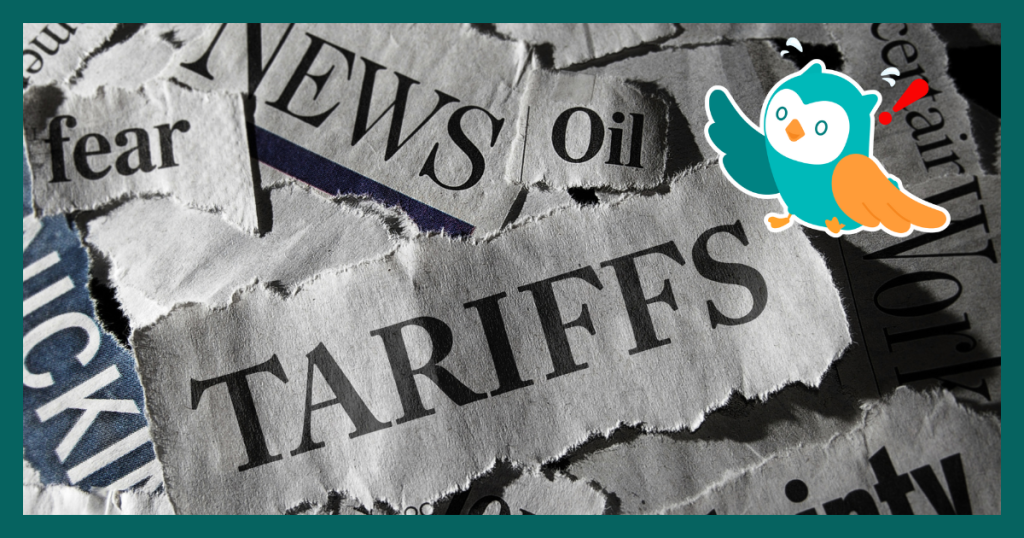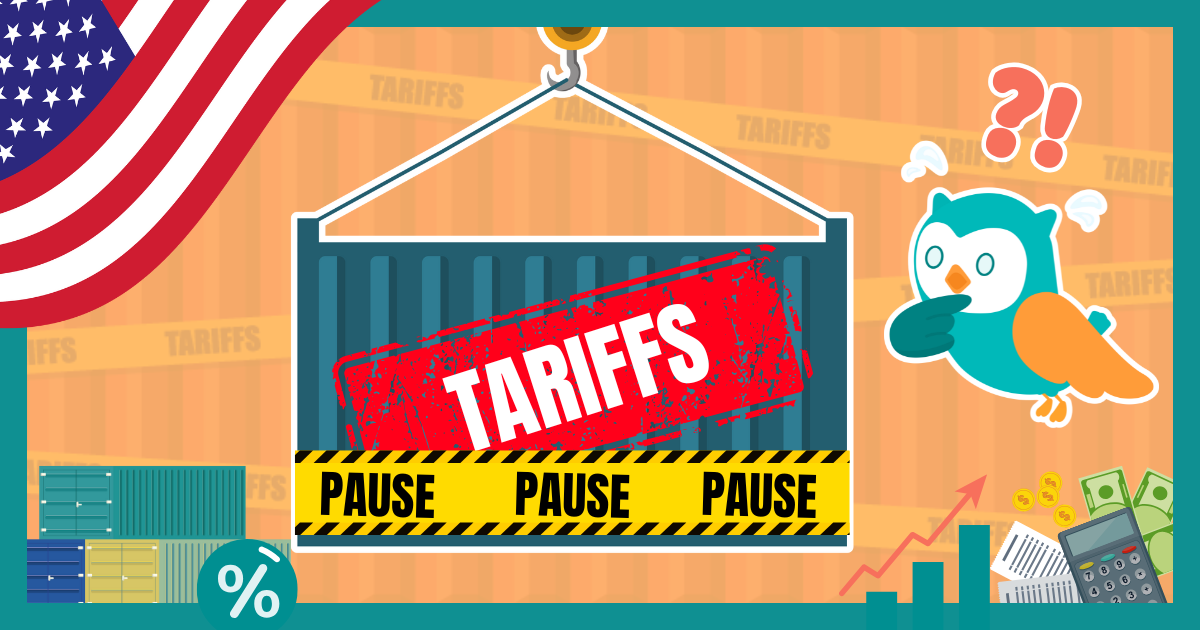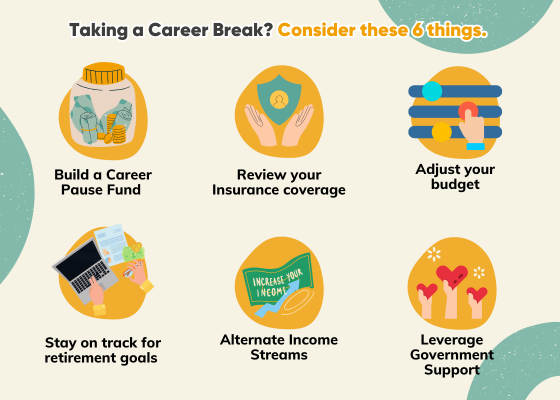Introduction: Tariffs, Turmoil, and Tough Questions
The world was shaken to the core after a slew of tariffs were announced by former US President Donald Trump on 2 April 2025. The market’s reaction was swift and brutal, with investors grappling to make sense of the geopolitical drama unfolding. As fear and uncertainty ripple through global economies, many are left wondering — what now? What does this mean for our investments, our retirement plans, and our daily lives?
MoneyOwl’s CEO and CIO Chuin Ting Weber did a deep dive into the impact of the new tariffs, explained the market’s reaction, and shared practical, time-tested guidance for long-term investors.
For those who prefer reading, we have distilled the insights from the video into this article.
The Return of Tariff Wars – Why It Matters
Trade wars aren’t new, but are once in a century. History has taught us that they can be devastating. The infamous Smoot-Hawley Tariff Act of the 1930s is a textbook example — igniting a global trade war and worsened the Great Depression. Economists universally agree: retaliation breeds escalation. Yet, politically, retaliation is often unavoidable.
With Singapore named on the list of affected nations despite a trade surplus with the US, Deputy Prime Minister Gan Kim Yong has already warned of “rough waters ahead.” The big question: how will this shape global economic prospects, and how should investors respond?
Market Signals: A Flight to Safety
Markets often serve as forward-looking indicators, and 3rd April’s trading spoke volumes. Bond yields fell across the board, signaling a rush toward safer assets. The 10-year US Government Treasury yield dipped below the psychological 4% level, while Singapore’s 10-year bond yield fell below 2.5%. Oil prices also declined, reflecting lower expectations for global demand.
This move wasn’t a surprise to seasoned observers. Leading indicators like the Purchasing Managers Index (PMI) had already been flashing warning signs. The manufacturing sub-index for new orders fell below 50 — a signal of contraction. Services indicators also weakened, though they’ve not yet slipped into contraction territory.
Consumers: The Hidden Casualty
In the US, consumption drives 70% of the economy. Tariffs — by design — raise prices on imported goods. That’s a direct hit to the consumer, amplified by a weakening US dollar and declining equity markets (affecting wealth perception). Then there’s the risk of rising unemployment as businesses struggle, creating a vicious cycle.
The irony? These policies are intended to bring jobs back to the US. But even if they succeed, the process will take years. The market and economy, however, react now.
This will, in turn, also affect Singapore – a country that is heavily reliant on global trade for its economy too. And these price hikes that are happening in US will soon be felt by consumers in Singapore as well.
Earnings, Valuations, and Reality Checks
Before the tariffs, earnings forecasts for the S&P 500 were rosy — perhaps too rosy. With the latest developments, analysts are expected to revise these downward.
As these earnings adjustments trickle in, stock prices are likely to correct further. History tells us this: things often get worse before they get better.
Is This the Start of a Recession and Bear Market?
Make no mistake. This is a once-in-a-century event.
But it’s not our only major crisis in recent times as investors. We’ve weathered the Global Financial Crisis of 2008, COVID-19, and numerous other downturns. A bear market, defined as a drop of 20% or more, is painful but not unprecedented. Markets have always recovered.
Looking back over a century of S&P 500 returns, the darkest periods — such as the Great Depression — were severe but finite. Even during the worst downturn, investors with a 15-year horizon ultimately saw positive returns. Markets always recover and go up in the long run.
The Case for Staying Invested
So, what should you do?
The instinct to “get out now and wait” is understandable — but it is neither necessary nor cost-free.
It All Boils Down to Time Horizon
Historical data shows that disciplined, long-term investing has consistently outperformed attempts to time the market.
If you’re investing for retirement that’s 15 or more years away, don’t panic. Short-term losses are painful, but irrelevant to long-term goals. Even the worst-case scenarios with the largest drawdowns — like the Great Depression — saw the broad stock market recover within that time frame.
The key is asset allocation — matching your portfolio to your time horizon, risk capacity, and goals.
Bonds have been criticised in recent years, particularly after interest rates spiked. But the past week has shown that bonds still play a crucial role — offering some degree of making returns less negative during equity market shocks, for those who do not have the time horizon or risk appetite for the gyrations of the full equities roller coaster. The purpose of smoothing it out a little? To keep you invested so you don’t unbuckle during the ride and cause your portfolio to fall to its metaphorical death.
Don’t Try to Time the Market
You can time the market sometimes – but not all the time. Yes, things may get worse before they get better. You can’t tell in advance which would be the down days or down years.
If you have the time horizon, these down days don’t actually hurt you. The only people who have to care about the short term are, ironically, investment professionals and fund managers who need to answer to clients in monthly, quarterly and three-yearly time frames.
What hurts you is missing the upturns. Missing just a few top-performing days even over a 30-year period can significantly reduce your nest egg.
That’s why staying invested — even through downturns — is actually safer than trying to “de-risk.” What feels like safety today can become regret tomorrow.
Markets move ahead of the economy. By the time things feel “safe” again, the recovery may already be well underway.
Investing success depends more on investor behaviour than on market conditions. Know yourself – if you are honest, after selling, would you know when to get back in and not miss those up days? Most likely, you would leave it too late, and risk your nest egg.
You don’t have to participate in the fear of short-term paper losses in the same way fund managers who are talking in the financial media are forced to.
Beyond Investing: What You Can Control
While markets remain out of your control, your personal finances are not. Focus on what you can control:
- Income – Safeguard your job by staying relevant and adding value.
- Expenses – Trim non-essential spending. Build up your savings buffer.
- Debt – Avoid overleveraging. Maintain healthy debt service ratios.
- CPF Buffer – Especially for mortgage payments, ensure liquidity in your CPF Ordinary Account.
The message: don’t try to fix your investment portfolio during a crisis. Instead, fortify your financial foundation.
Policy and Government Support
Unlike in the Great Depression, today’s central banks have the tools and the will to act. The Federal Reserve and global policymakers have shown a readiness to intervene — from quantitative easing to emergency rate cuts.
It’s true that this time, the Fed has a more difficult task, as a trade war might drive up both inflation AND unemployment, i.e., stagflation. But the comfort again is that, even in most stagflation years in the past, the stock market has given a positive real return.
In Singapore, the MAS has room to ease monetary policy via exchange rate adjustments, and the government also has the ability to support households and individuals if needed.
Stick to Evergreen Principles
How do you navigate a once-in-a-century event? By relying on time-tested principles:
- Stay invested if your time horizon allows.
- Diversify globally to capture upside and manage downside.
- Rebalance rather than react.
- Control your cash flow, not the market.
- Stick to the plan, even when fear is loud.
Closing Thoughts: The Stockdale Paradox
Admiral James Stockdale, a Vietnam War hero, once spoke of balancing “the brutal facts” with unwavering hope. That’s the mindset we need today.
Acknowledge the volatility. Accept that earnings will likely weaken in the short-term. But also remember that markets will eventually recover. Human enterprise persists. And well-planned portfolios endure.
Focus on what you can control. Tighten your belt. Stay the course.
And when the storm passes — as it always does — you’ll be glad you did.
For more financial insights and guidance, follow MoneyOwl and subscribe here for our free OwlHoots newsletter on financial planning insights and analysis. Let’s keep growing, even through the storm.
Disclaimer:
While every reasonable care has been taken to ensure the accuracy of information provided, no responsibility is accepted for any loss or inconvenience caused by any error or omission. The information and opinions expressed herein are made in good faith and are based on sources believed to be reliable but no representation or warranty, express or implied, is made regarding their accuracy, completeness or correctness. The author and publisher shall have no liability for any loss or expense whatsoever relating to investment decisions made by the reader.
This publication has not been reviewed by the Monetary Authority of Singapore.




